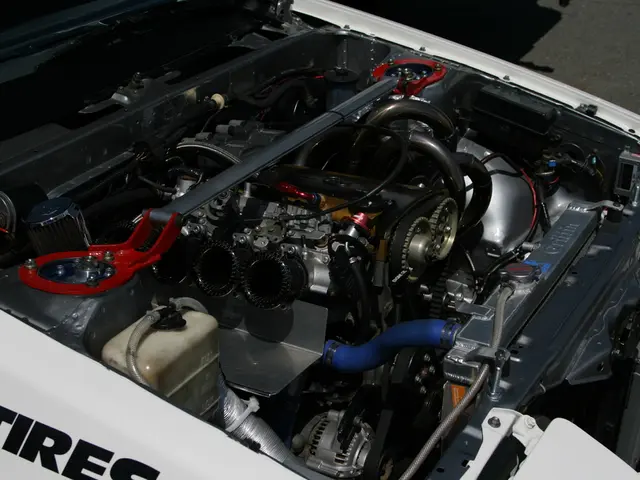Bargains Aboard the Electric Car Revolution: Electric Vehicles See a Price Drop
Rising Discounts on Electric Cars: The Price of E-cars is Decreasing Significantly - Rising discounts on electric vehicles lead to a decrease in their prices.
Take a closer look at sales numbers, and it shows that the average discount applied to electric vehicles (EVs) has climbed from 14.9% to 16.7%. Concurrently, the discounts for internal combustion engine (ICE) vehicles have dipped from 17.9% to 17.5%. Put simply, the average transaction price for an electric vehicle dipped to €37,171, while the average ICE vehicle's ascended to €32,946, according to Ferdinand Dudenhöffer's discussion.
In a nutshell, we're witnessing a high level of vehicle discounts. What's the reason? Experts point to weak demand as the driving force behind such moves.
Opel stands out among the pack due to its hefty discounts, stretching to both its ICE and electric lineup. Similarly, BMW is found leaning on heavy price cuts, primarily in its EV line. However, Tesla, in contrast, hasn't experienced much change in pricing, potentially weakening its market position in Germany based on Dudenhöffer's analysis.
Tesla'sregistry numbers have taken a hit across multiple countries, including Germany. Could the culprit be Elon Musk's political attention on the Trump administration? "Without price adjustments," Dudenhöffer predicts, "Tesla's slide in new registrations will be unstoppable."
What's On the Horizon for Discounts and Electric Vehicles (EVs)
The automotive industry is shifting across the globe, with differing trends in discounts for EVs and ICE vehicles shaping up depending on the region and market environment.
Bargains and Breaks
- Europe: Throughout Q1 2025, the auto sector in major EU countries shelled out over €1.5 billion in discounts, mirroring stiff competition as both EVs and ICE vehicles are influenced by strategic pricing and incentives[1]. Countries like Germany and the UK reported price jumps, yet discounts remained modest compared to countries, such as Italy, with higher discount rates in past years[2].
- Worldwide EV Sales: Despite fierce market rivalry, electric vehicle sales surged by 29% in March 2025 versus the previous year, suggesting that while bargains play a part, other factors such as government incentives and customer favoritism toward EVs are propelling sales[3].
Support from the Government
- Fiscal Encouragement: In select areas, like the United States, federal tax credits offer substantial incentives for purchasing new and used EVs, amounting to €6,500 for new vehicles and €4,000 for second-hand ones[4]. These tax breaks can substantially lower the overall cost of EVs compared to ICE vehicles.
Market Forces
- Pricing Pressure: Globally, sales are under stress due to pricing pressure. Certain countries have witnessed price rises, particularly for luxury vehicles. This pressure is intensified by new EV market contestants that necessitate established manufacturers to deliver competitive pricing and discounts[2].
Ultimately, while discounts serve as a crucial element in the game of competition, EV market growth is fueled by a blend of consumer appeal, government incentives, and strategic pricing tactics. ICE vehicles, on the other hand, encounter less government support and generally remain competitively priced without significant discounts.
- Discounts for electric vehicles (EVs) in Europe soared to over €1.5 billion in Q1 2025, indicating intense competition as both EVs and Internal Combustion Engine (ICE) vehicles are influenced by strategic pricing and incentives.
- Germany and the UK reported price jumps, yet discounts remained modest compared to countries like Italy, which has historically had higher discount rates.
- Despite fierce market rivalry, electric vehicle sales surged by 29% in March 2025 versus the previous year, suggesting that while bargains play a part, other factors such as government incentives and customer favoritism toward EVs are propelling sales.
- In select areas like the United States, federal tax credits offer substantial incentives for purchasing new and used EVs, amounting to €6,500 for new vehicles and €4,000 for second-hand ones, substantially lowering the overall cost of EVs compared to ICE vehicles.
- Tesla, despite not experiencing much change in pricing, could face a challenge in Germany due to a fall in new registrations, as experts predict without price adjustments, Tesla's slide in new registrations will be unstoppable.







